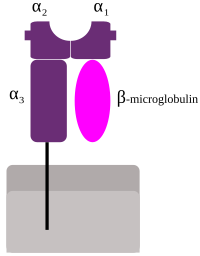
Photo from wikipedia
Importance As self-collected home antigen tests become widely available, a better understanding of their performance during the course of SARS-CoV-2 infection is needed. Objective To evaluate the diagnostic performance of… Click to show full abstract
Importance As self-collected home antigen tests become widely available, a better understanding of their performance during the course of SARS-CoV-2 infection is needed. Objective To evaluate the diagnostic performance of home antigen tests compared with reverse transcription-polymerase chain reaction (RT-PCR) and viral culture by days from illness onset, as well as user acceptability. Design, Setting, and Participants This prospective cohort study was conducted from January to May 2021 in San Diego County, California, and metropolitan Denver, Colorado. The convenience sample included adults and children with RT-PCR-confirmed infection who used self-collected home antigen tests for 15 days and underwent at least 1 nasopharyngeal swab for RT-PCR, viral culture, and sequencing. Exposures SARS-CoV-2 infection. Main Outcomes and Measures The primary outcome was the daily sensitivity of home antigen tests to detect RT-PCR-confirmed cases. Secondary outcomes included the daily percentage of antigen test, RT-PCR, and viral culture results that were positive, and antigen test sensitivity compared with same-day RT-PCR and cultures. Antigen test use errors and acceptability were assessed for a subset of participants. Results This study enrolled 225 persons with RT-PCR-confirmed infection (median [range] age, 29 [1-83] years; 117 female participants [52%]; 10 [4%] Asian, 6 [3%] Black or African American, 50 [22%] Hispanic or Latino, 3 [1%] Native Hawaiian or Other Pacific Islander, 145 [64%] White, and 11 [5%] multiracial individuals) who completed 3044 antigen tests and 642 nasopharyngeal swabs. Antigen test sensitivity was 50% (95% CI, 45%-55%) during the infectious period, 64% (95% CI, 56%-70%) compared with same-day RT-PCR, and 84% (95% CI, 75%-90%) compared with same-day cultures. Antigen test sensitivity peaked 4 days after illness onset at 77% (95% CI, 69%-83%). Antigen test sensitivity improved with a second antigen test 1 to 2 days later, particularly early in the infection. Six days after illness onset, antigen test result positivity was 61% (95% CI, 53%-68%). Almost all (216 [96%]) surveyed individuals reported that they would be more likely to get tested for SARS-CoV-2 infection if home antigen tests were available over the counter. Conclusions and Relevance The results of this cohort study of home antigen tests suggest that sensitivity for SARS-CoV-2 was moderate compared with RT-PCR and high compared with viral culture. The results also suggest that symptomatic individuals with an initial negative home antigen test result for SARS-CoV-2 infection should test again 1 to 2 days later because test sensitivity peaked several days after illness onset and improved with repeated testing.
Journal Title: JAMA internal medicine
Year Published: 2022
Link to full text (if available)
Share on Social Media: Sign Up to like & get
recommendations!